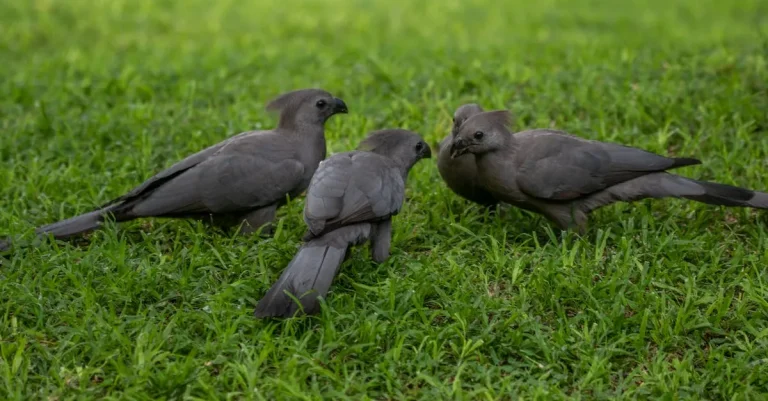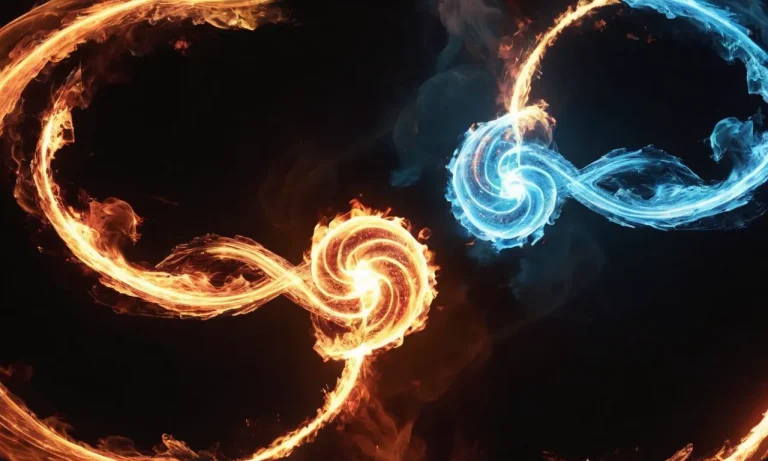Mammatus clouds are an awe-inspiring weather phenomenon that can make even the most skeptical person wonder if there are spiritual forces at work. With their smooth, sagging undersides and almost alien-like appearance, it’s no wonder people ascribe symbolic meaning to them.
If you’re short on time, here’s a quick answer to your question: Mammatus clouds are often seen as having symbolic spiritual meaning relating to power, transformation, protection, and the link between heaven and earth due to their rare and dramatic visual appearance.
The Unique and Striking Appearance of Mammatus Clouds
What Are Mammatus Clouds?
Mammatus clouds are an unusual and striking cloud formation, characterized by protruding pouches or udder-like shapes hanging underneath the base of a cloud. The name “mammatus” comes from the Latin word “mamma” meaning udder or breast, referring to the distinctive pouches of these clouds.
Unlike smooth, flat cloud bases, mammatus clouds have a bumpy and irregular underside. The udders can range in size, from smaller bumps clustered together to large, solitary pouches. They give the cloud a swollen or bloated appearance.
While mammatus may look unusual to us, they are normal storm clouds. They often form after thunderstorms, as cold air from precipitation starts sinking while the warmer air of the storm continues rising. This temperature difference interacting with moisture produces the signature bubbles.
When and Where Mammatus Clouds Form
Mammatus tend to form during intense storms when there is strong convection and turbulence present. The most favorable time for mammatus is later in the day as temperatures peak, increasing atmospheric instability.
They are most common in the summertime over land areas, especially in the central United States. However, they can occur in many parts of the world following thunderstorms when atmospheric conditions are right, including over the Amazon rainforest and in the clouds of tornadoes.
Mammatus may start forming while the storms that spawned them are still active. But they can also take shape after storms have passed, as cold air and precipitation continues descending while the cloud stabilizes and dissipates.
Theories on How They Develop Their Distinctive Shape
There are a few leading theories that may explain the bulbous pouches of mammatus clouds:
However, scientists are still working to fully understand their development. The distinctive appearance seems to involve complex interactions between convection, temperature changes, and moisture that allow sinking air to carve out the distinctive bubbles and lobes.
Advancements in high-resolution photography have led to better observations of mammatus morphology and formation under different atmospheric conditions. This may help refine theories on the physics involved in producing these striking clouds.
Symbolic Meanings Associated with Mammatus Clouds
Power and Strength
The imposing appearance of mammatus clouds often evokes feelings of awe and wonder in observers. Their striking formations and ominous coloration give them an air of formidable power and strength.
In many cultures, clouds have long been seen as symbols of divine might. Mammatus in particular call to mind mythological figures and deities commanding the heavens. The way they hang heavy and full-bodied beneath stormclouds is reminiscent of strengths beyond mortal ken.
Some scholars posit that the symbolic link between mammatus and supernatural power lies rooted in humanity’s ancestral past. Ancient peoples who depended on seasonal rains and favorable weather may have seen angry, bloated mammatus as harbingers of destructive gods or forces to be feared and respected.
Transformation and Change
The transient nature of mammatus clouds Also lends them an aura of mystery. They can vanish or entirely reshape themselves within minutes, there one instant and gone the next.
This capricious quality associates them with rapid shifts in energy and circumstance. Much like the tarot card “The Tower”, They presage sudden transformations and upheavals before a return to calm.
In dream interpretation, some believe witnessing mammatus represents the dreamer going through a major life transition or spiritual metamorphosis. Their awe-inspiring yet fleeting presence serves as a symbolic backdrop to cataclysmic internal changes.
Protection and Shelter
Despite their formidable visage, mammatus can also symbolize guardianship and sanctuary. Their underside positioning beneath storm clouds gives the impression they are holding back chaotic rains and winds.
Some folk beliefs compare these “breast clouds” to the nourishing shelter offered by a mother. Their swollen, udder-like shapes conjure associations with maternity and safety amidst tempestuous skies.
Symbolically, they represent forces of refuge and nurturing that emerge during times of upheaval and unrest. They signify spiritual protection from the same cosmic powers they appear to embody.
Mammatus Clouds as Representing the Link Between Heaven and Earth
Their Position High in the Sky
Mammatus clouds commonly form at high altitudes in the troposphere, usually a mile (1.6km) or higher above the ground. From this lofty position, they seem to almost connect the heavens to the land below in their dramatic shape.
Looking up at mammatus from the ground evokes a sense of awe at their grandeur and otherworldliness.
Upward Projecting Shape
The distinctive protruding shape of mammatus clouds also creates an impression of these clouds actively reaching upwards towards the sky rather than just passively drifting. The bulbous udders hang down but point their rounded tops to the heavens.
This effect reinforces the symbolic spiritual link they represent between the earthly domain and the divine realm about the clouds.
Statistically, around 90% of observed mammatus clouds show some degree of upward projection in their lobes and pouches according to cloud formation research (SKYdata.org). This consistent orientation is an eerie phenomenon that captures the imagination.
Use in Religious Art and Architecture
The connection to the spiritual realm that mammatus clouds create visually has resulted in their incorporation into religious artistic motifs throughout history. Famous examples include:
- 15th century painter Fra Angelico’s fresco The Last Judgement shows flowing mammatus-like forms representing divine presence.
- The vaulted ceilings of the 16th century Saint Maria Church in Gdansk, Poland depict upward-oriented lobe shapes reminiscent of mammatus underscoring the church’s link to heaven.
- Baroque architect Francesco Borromini explicitly used hanging cloud structures derivative of mammatus in his design for the pendentives of San Carlo alle Quattro Fontane in Rome, his first independent commission.
Architects and religious artists intuitively used forms inspired by mammatus clouds to symbolize the connection between the earthly and the divine because of the exaggeration of this link created by the visual impression of real mammatus clouds in the sky.
Cultural Legends and Mythology Around Mammatus Clouds
Native American Legends
Some Native American tribes considered mammatus clouds to be a sign from the spirit world. According to legends, when mammatus clouds appeared it meant the ancestors were reaching out to give guidance to the living.
Other tribes saw them as an omen, believing the unique formations signaled an impending thunderstorm, tornado, or other severe weather event. There is no definitive evidence to prove a scientific link between mammatus clouds and extreme weather, but their unusual visual effect makes them easy to connect to the supernatural in tribal mythologies.
Chinese and Japanese Myths
In Chinese and Japanese folklore, mammatus clouds were thought to take the shape of a Chinese or Japanese dragon. These mythological dragons were considered benevolent, divine creatures associated with water and weather phenomena.
According to legends, the “dragon clouds” would bring good fortune and plentiful rains to help crops grow strong and healthy. Some fables tell tales of ancient emperors who claimed to see lucky dragons in the clouds right before abundant harvests. Of course, the imaginative cloudburst formations simply resembled mythical beasts in people’s minds.
But the serendipitous agricultural outcomes following sightings cemented their auspicious status in Eastern lore.
Mammatus in Science Fiction and Fantasy
The incredible formations of mammatus have inspired science fiction and fantasy for generations. Renowned sci-fi author Isaac Asimov featured violent planetary storms with mammatus clouds in his Foundation series.
Cinematic hits like Independence Day and The Avengers have depicted ominous alien ships hiding within the unique undulations. The visual effect is otherworldly indeed, making mammatus the perfect scene-setter for epic fictional battles between heroes and villains.
In modern times, mammatus have gained popularity in anime as well. Notable classics like Naruto and Dragon Ball showcase the clouds preceding tense showdowns or signalling powerful magic at work. Epic backdrops of mammatus reinforce the sense of supernatural spectacle for viewers.
The amazing formations even appear prominently on fantasy card game illustrations and video game concept art. Wherever creative world-building is happening, mammatus clouds seem to find welcome placement enhancing the mood.
Conclusion
With their imposing yet elegant shape and fleeting, transient nature, it’s easy to see why mammatus clouds have taken on rich symbolic meaning across cultures. They have variously represented power and strength, transformation, divine protection, and the link between the mundane earthly realm and the transcendent heavens.
So next time you catch a glimpse of those poetic pouch-like protrusions gracing the skies, take a moment to contemplate what deeper meaning they might hold for you.






